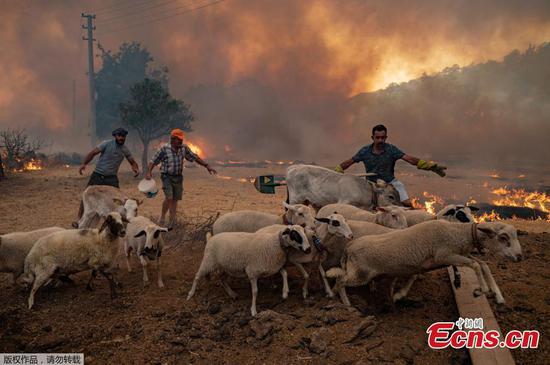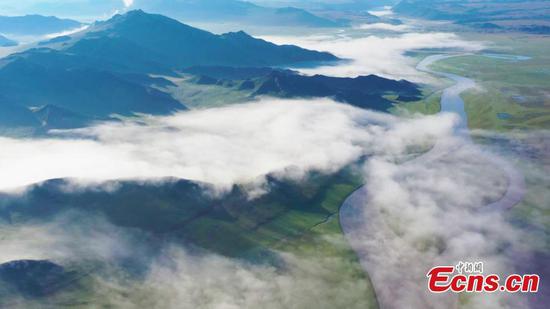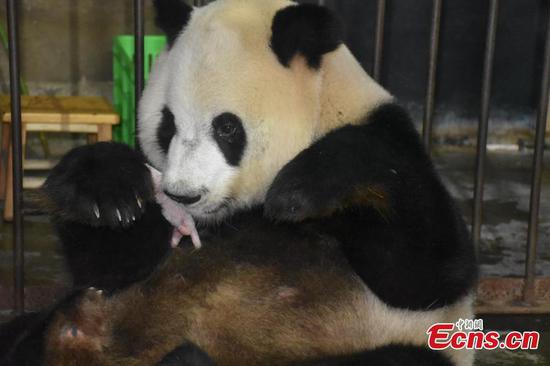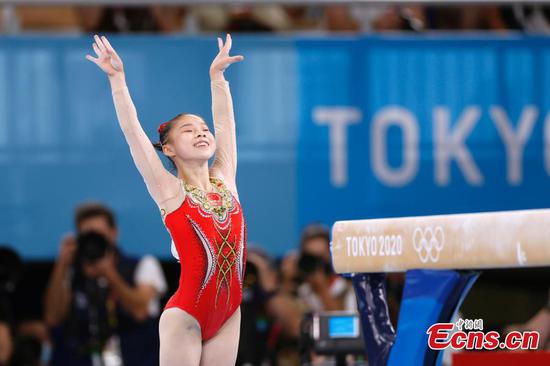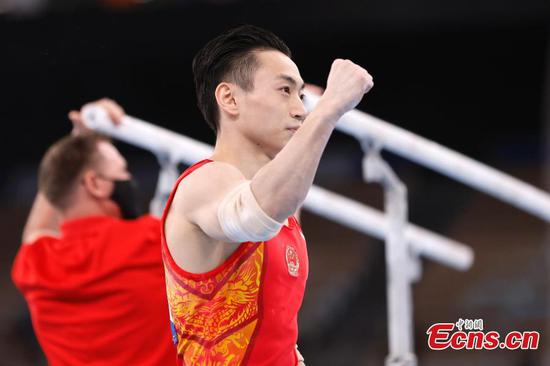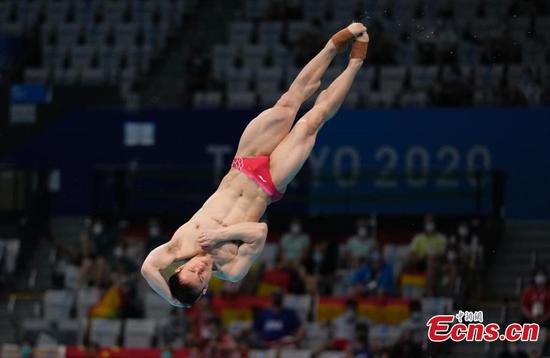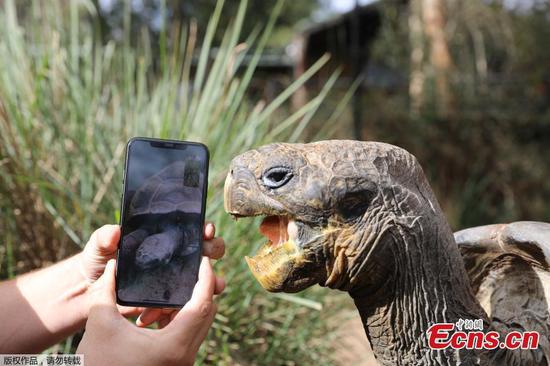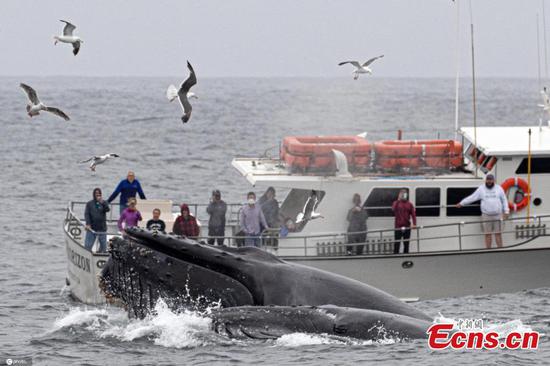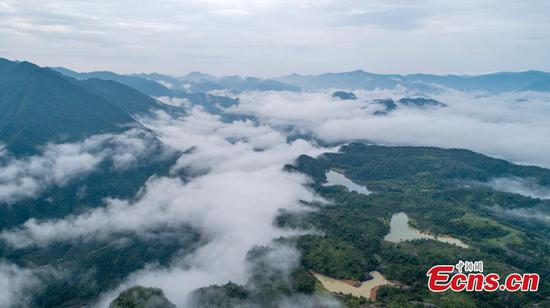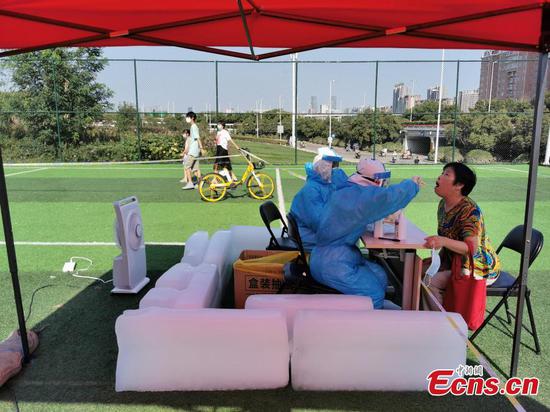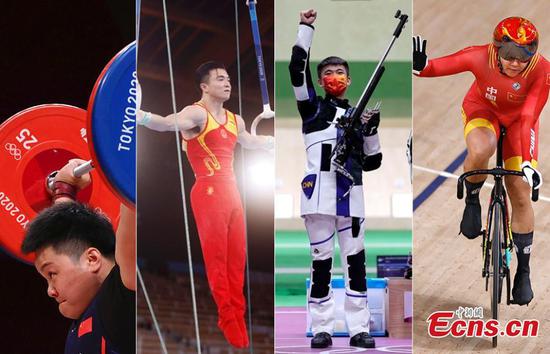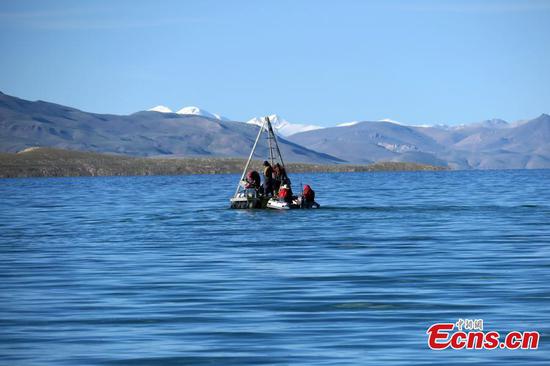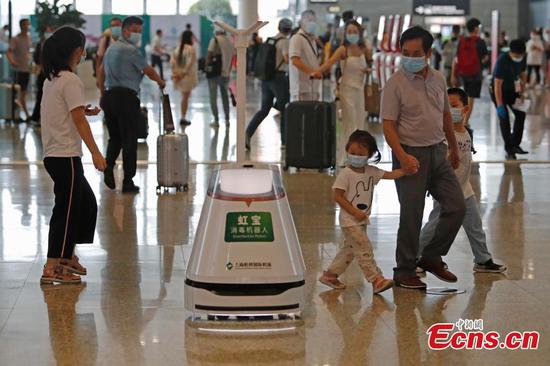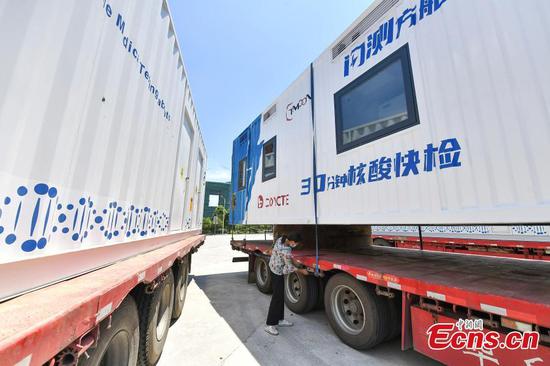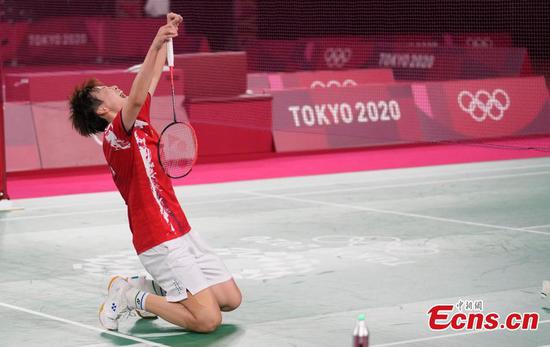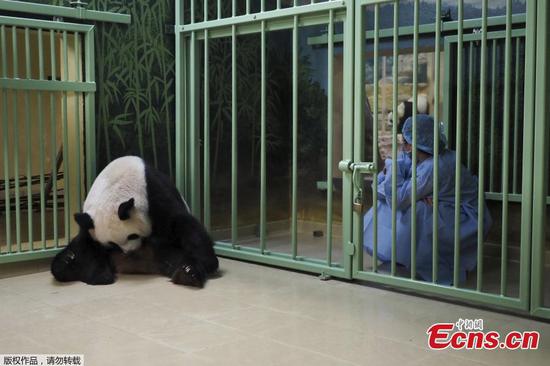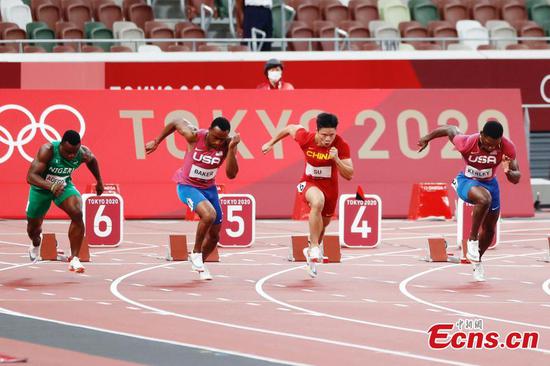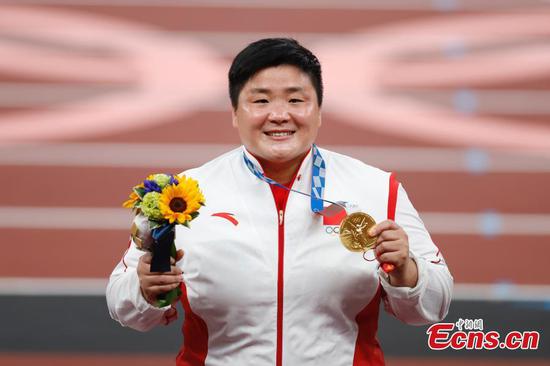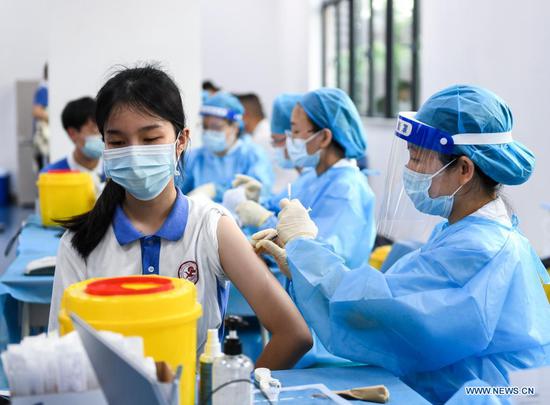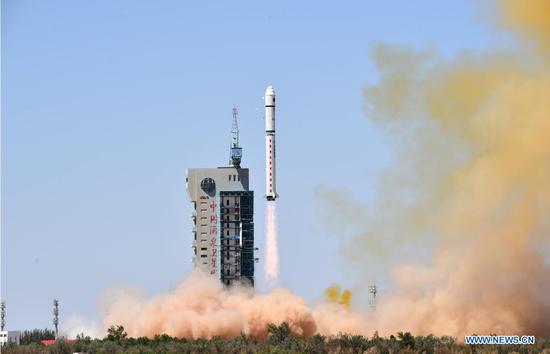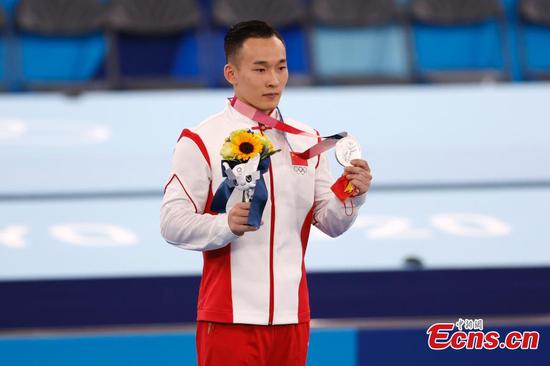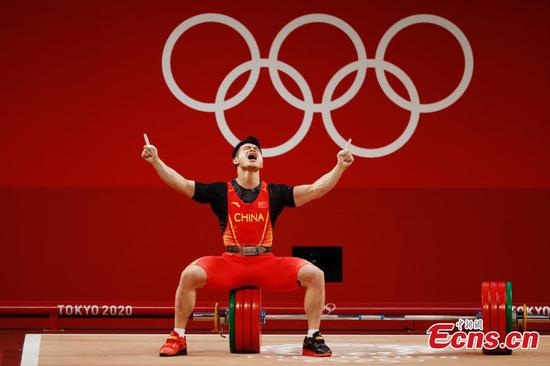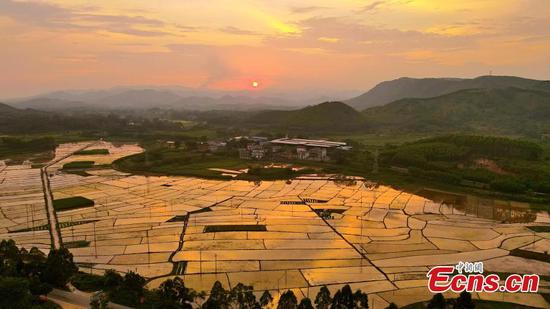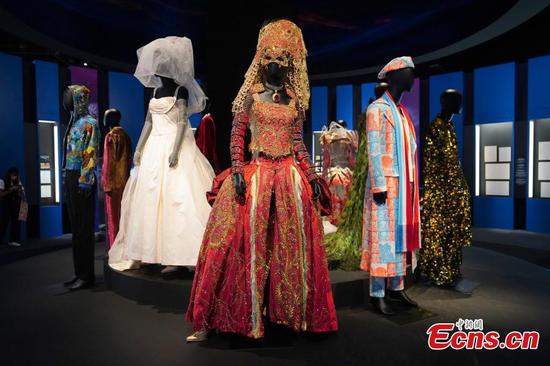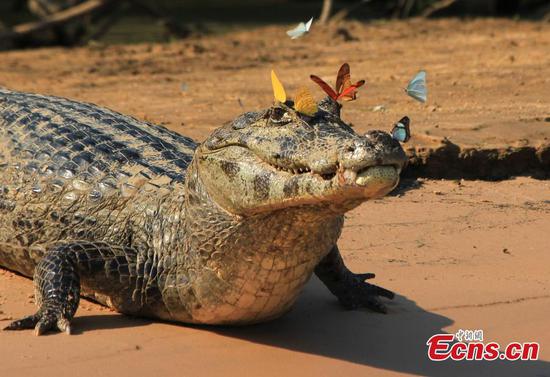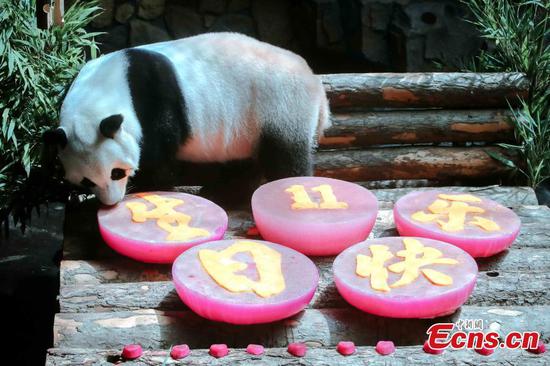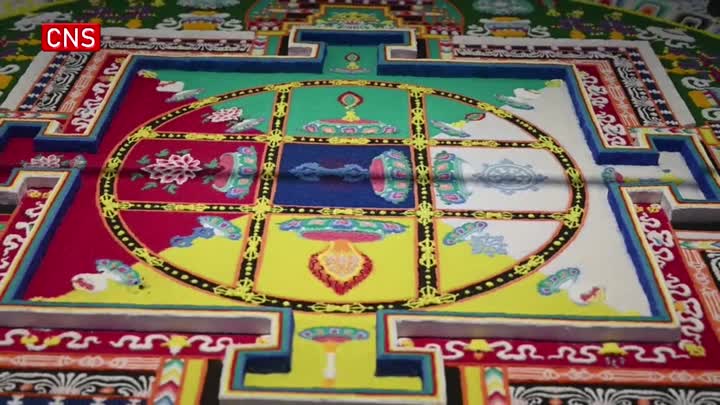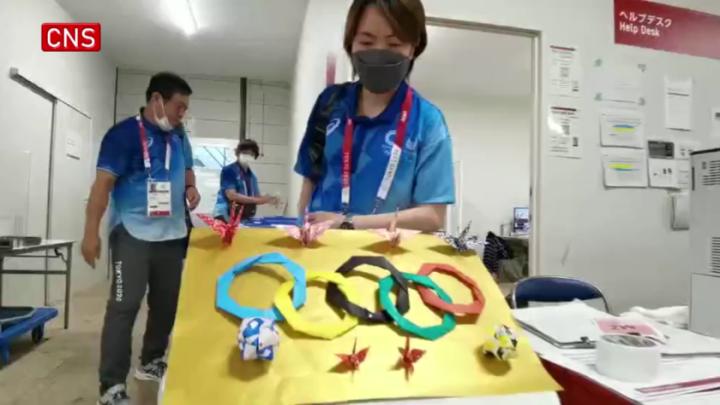
A swimmer takes part in a training at a wind tunnel of the China Academy of Aerospace Aerodynamics in October in Beijing. (Photo provided to China Daily)
Many of the Chinese athletes competing at the Tokyo 2020 Olympic Games are benefiting from technological assistance from China's space scientists and engineers.
Before setting out for the Tokyo Games, dozens of athletes in the Chinese delegation visited an area in the southwestern suburbs of Beijing that is home to a number of leading space technology organizations.
During their stay, the athletes were exposed to technologies normally used in research and development of carrier rockets, missiles and unmanned planes, and listened to suggestions from experts from the China Academy of Aerospace Aerodynamics.
"We used our technologies and equipment to help rowers, swimmers and cyclists in the national team to improve their training and performance," said Jia Yi, deputy head of the academy's Low-Speed Wind Tunnel Lab.
"For instance, rowers in the women's quadruple sculls came to my lab and used a low-speed wind tunnel to measure the air drag on their bodies during a contest. The results enabled their trainers and researchers to analyze and adjust the athletes' moves, optimize training methods and redesign sport suits," he said.
China won a gold medal in the women's quadruple sculls with a world-record time in Tokyo, its second-ever Olympic gold in the rowing competition after the 2008 Beijing Games.
According to the engineer, wind tunnels are the most essential hardware in aerodynamic research and experimentation as they create and manipulate the airstream around an aircraft or a rocket to verify and measure its aerodynamic performance.
During the past few years, wind tunnels have become increasingly popular in Western countries, including the United States and Canada, as coaches and athletes have found the infrastructure useful in improving moves, training methods and equipment.
In addition to the wind tunnels in its compound, the academy also built a training wind tunnel at a national winter sports training and research center in Beijing's Fengtai district for the General Administration of Sport.
The tunnel has an internal space of 60 cubic meters and is able to generate winds with speeds of up to 151 kilometers per hour. It can host experiments for both winter and summer sports, said Dong Guoqiang, a project manager at the academy in charge of the tunnel's construction and operations.
The facility started receiving athletes in October and is mainly used in preparations for the Beijing 2022 Olympic Games, he noted.
The academy's tunnels have greatly helped Chinese athletes, some of whom have won gold in Tokyo. But their achievements also require a great deal of intense training and careful preparation, Dong said.








